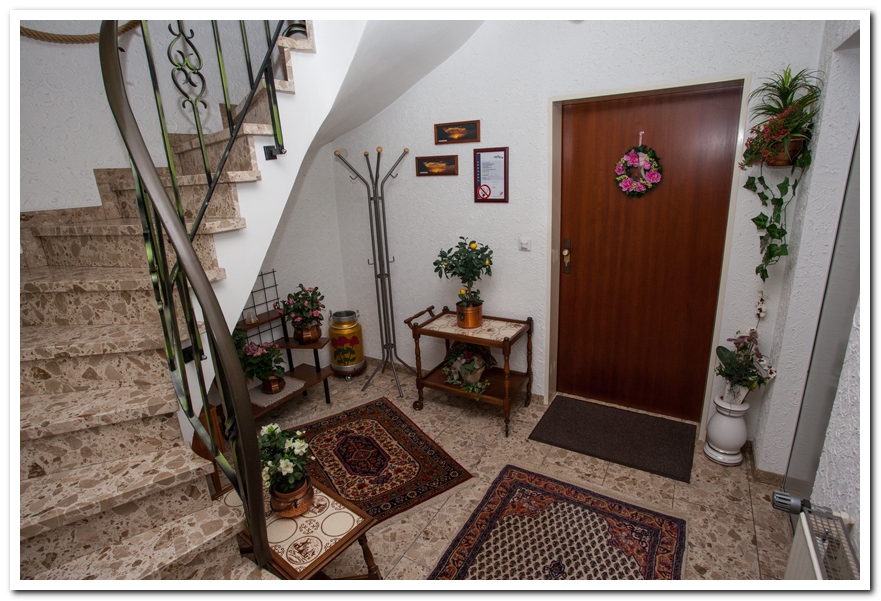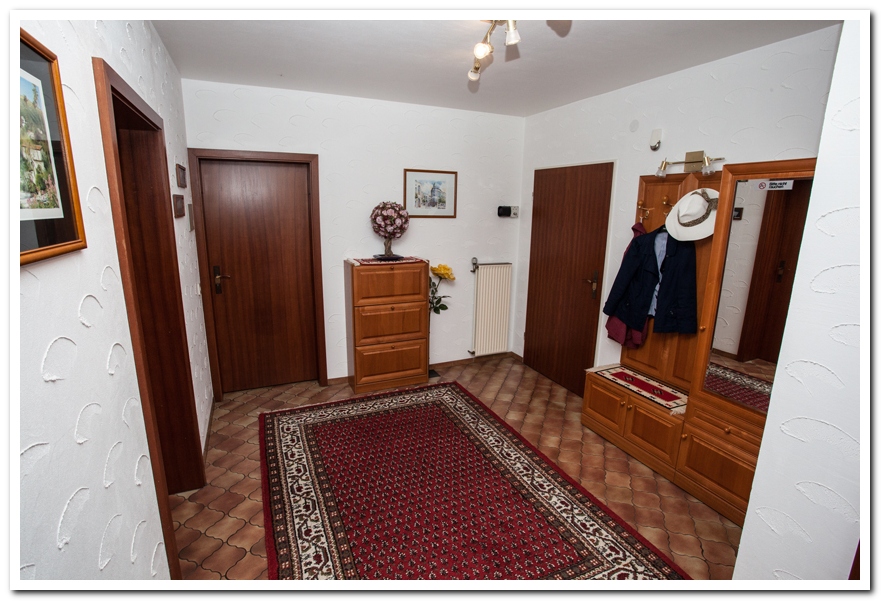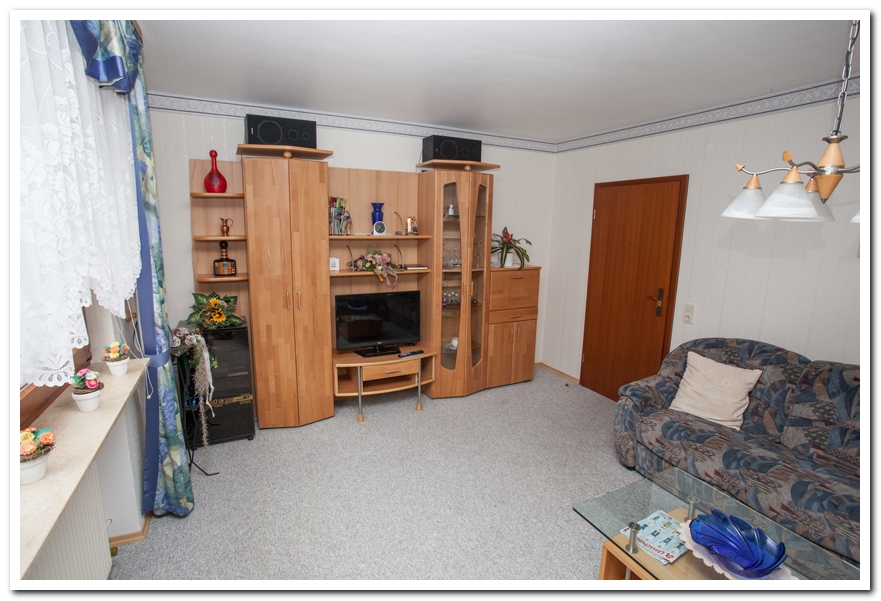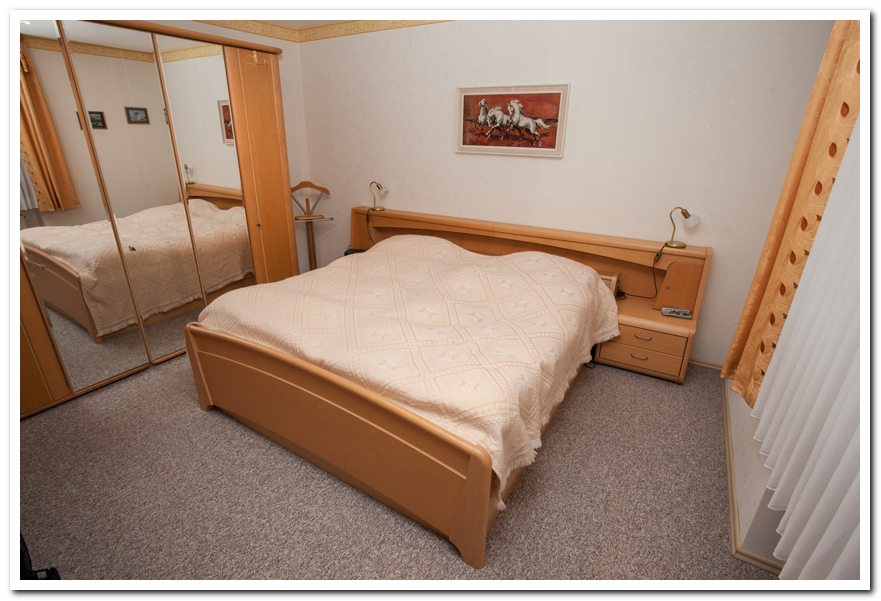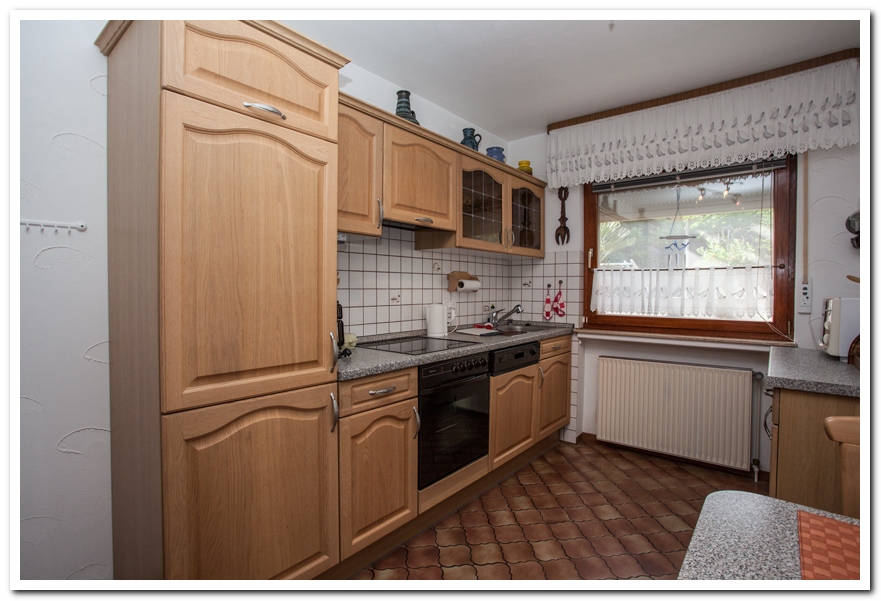Bodenwerder
In June 2014 we stayed in Bodenwerder, Germany. The town stands on the River Weser and its main claim to fame is that it is the home of Baron von Muenchhausen. Here are some photos:
First of all, the Hermannsdenkmal. It commemorates the Varusschlacht in 9 A.D. whereby a collection of Germanic Tribes, united under the leadership of Arminius (or Hermann) defeated two Roman Legions under the command of Quinctilius Varus. It changed the course of history as the Romans were then not able to subjugate most of what is now modern Germany east of the Rhine.

The statute itself is 26.57 meters high and was, at the time of the completion of its construction in 1865, the tallest statue in the world (a title it lost to the Statue of Liberty, New York, in 1886).
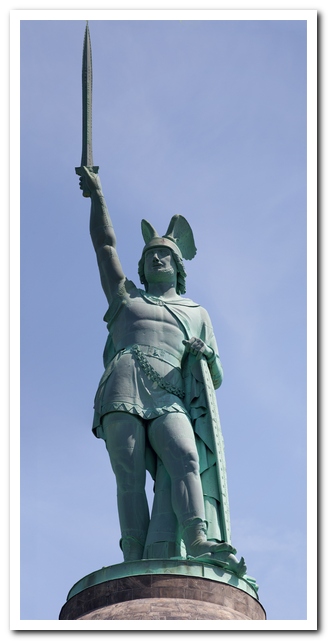
This is the town of Hamelin (or Hameln in German) of Pied Piper fame (Rattenfaenger in German). The story itself seems to be based on an event that happened on 22nd July 1284. No-one knows exactly what happened but the Brothers Grimm recorded the popular version - whilst the town of Hamelin was suffering from a rat infestation, a piper dressed in colorful red clothing appeared, claiming to be a rat-catcher. He promised the mayor a solution to their problem with the rats. The mayor in turn promised to pay him for the removal of the rats. The piper accepted, and played his pipe to lure the rats into the Weser River, where all but one drowned. Despite the piper's success, the mayor reneged on his promise and refused to pay him the full sum. The piper left the town angrily, vowing to return later to take revenge. On Saint John and Paul's day, while the Hamelinites were in church, the piper returned, dressed in green, like a hunter, playing his pipe, and in so doing attracting the town's children. One hundred thirty children followed him out of town, where they were lured into a cave and never seen again.
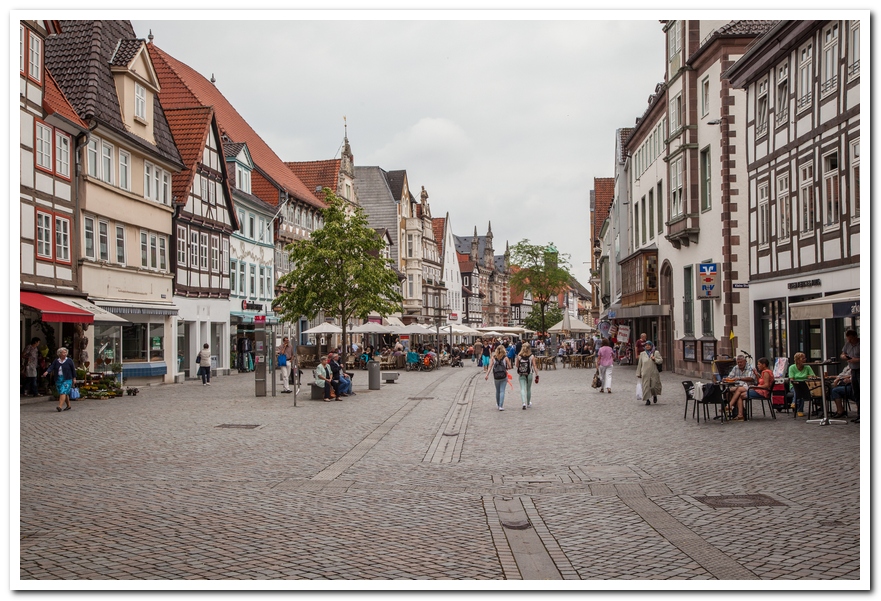
One nice detail that Pat spotted before I had noticed was that along the main street every so often the cobbles had these metal rats embedded in them.
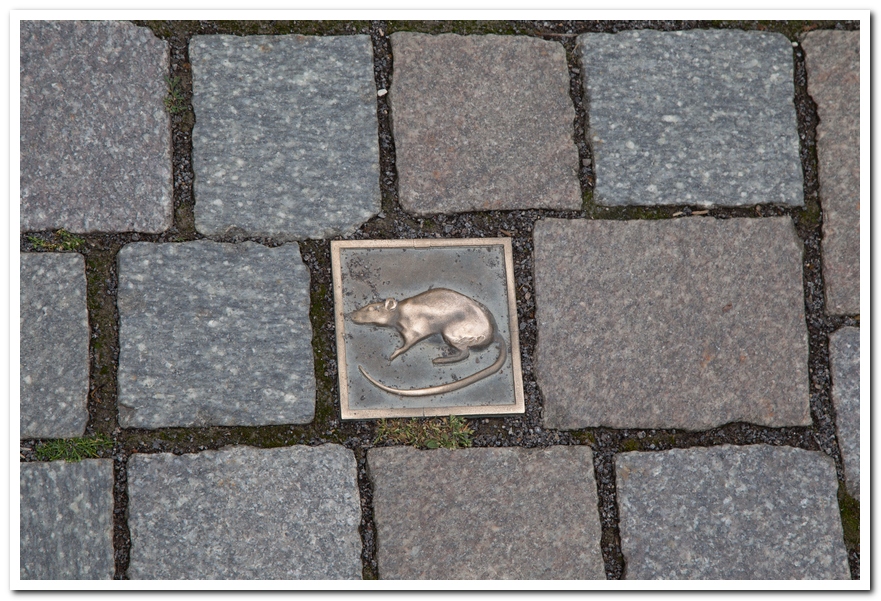
Every Wednesday aftenoon during the summer the Musical "Rats" is peformed outside the Hochzeithaus in the centre of Hamelin. We stayed to watch and enjoy the performance.


This is Einbeck. Some of the houses in this row were built in 1542.
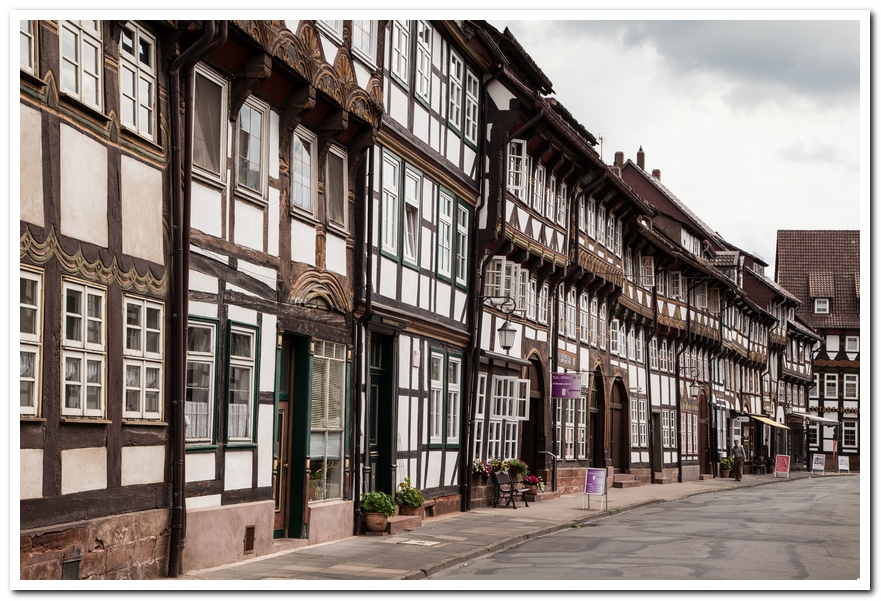
Here is Pat stood outside one of the particularly bowed frontages.
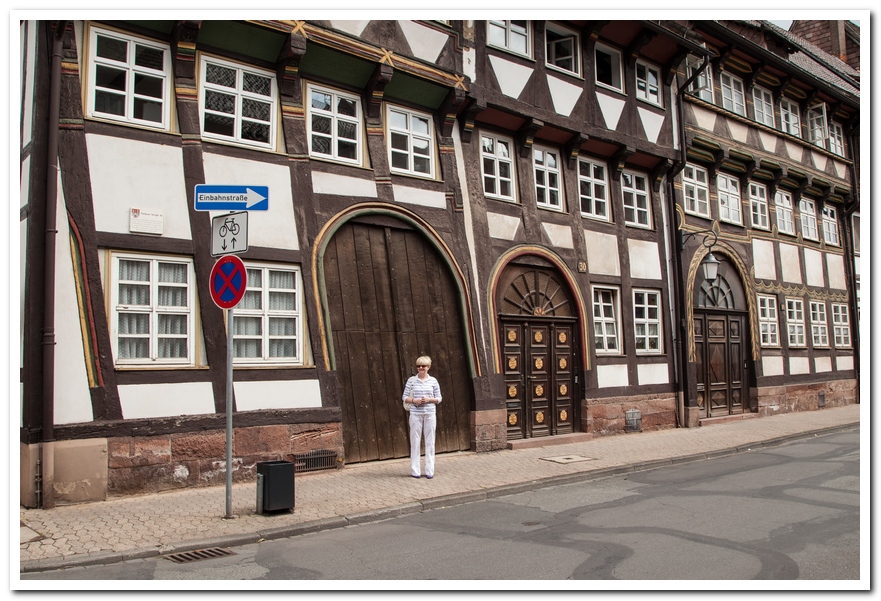
And here is Pat remembering her days cycling to school!
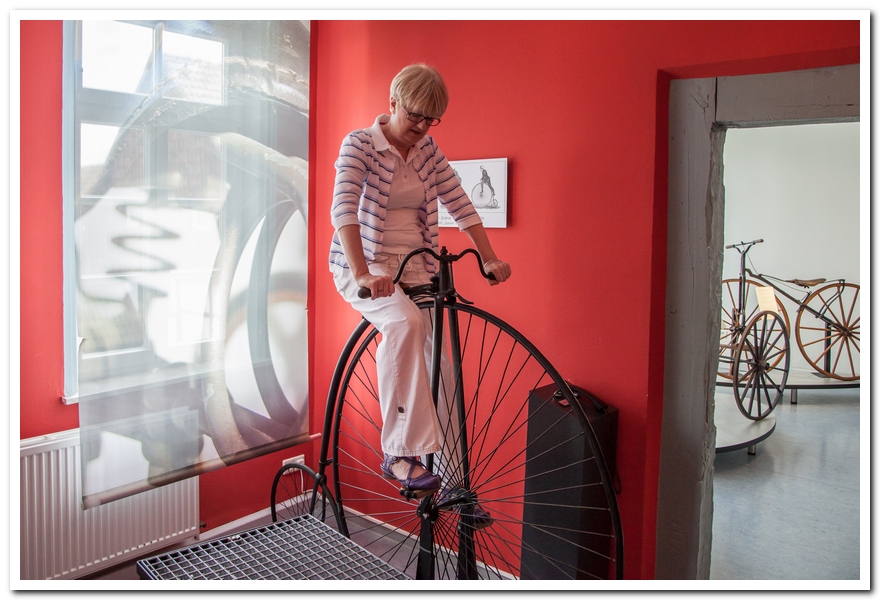
Penny Farthings were way before my time of course, but I thought I would give it a try.
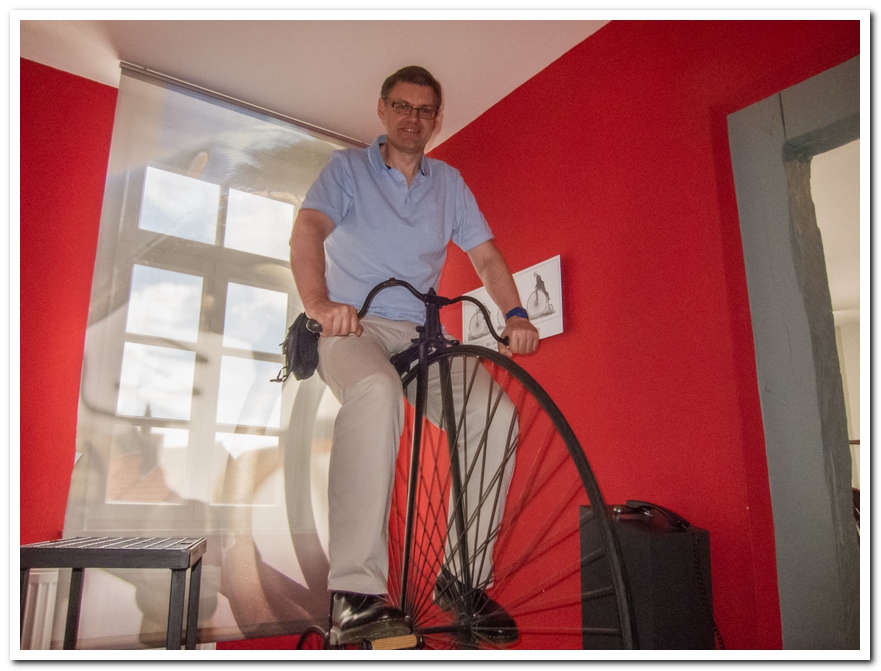
Pat could also clearly remember many days of sitting at the desk writing with her quill pen!!
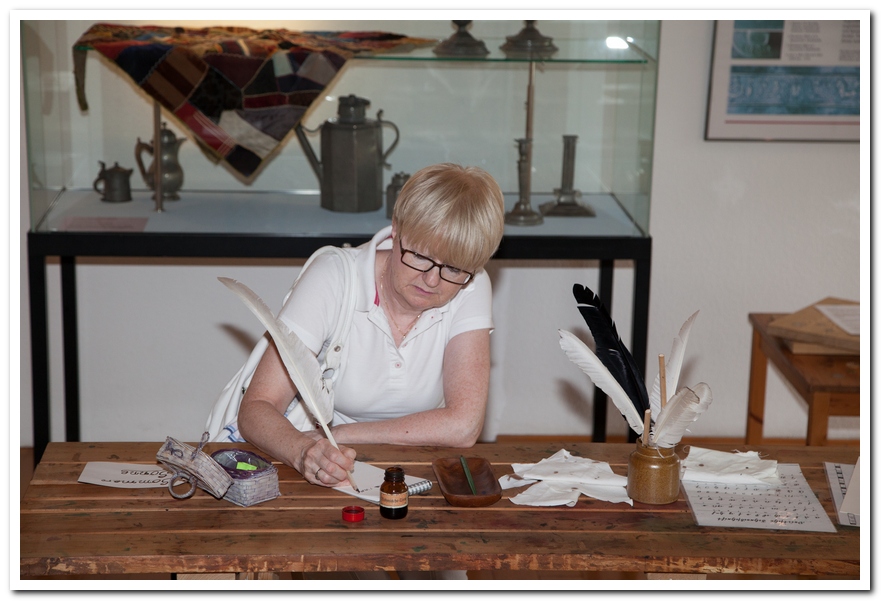
This is the spa at Bad Pyrmont, a town in the hills to the west of Bodenwerder which we visited on one of our bike rides.

An interesting statue that we saw on the way up to the spa building.

This is the Schloss in Bad Pyrmont.
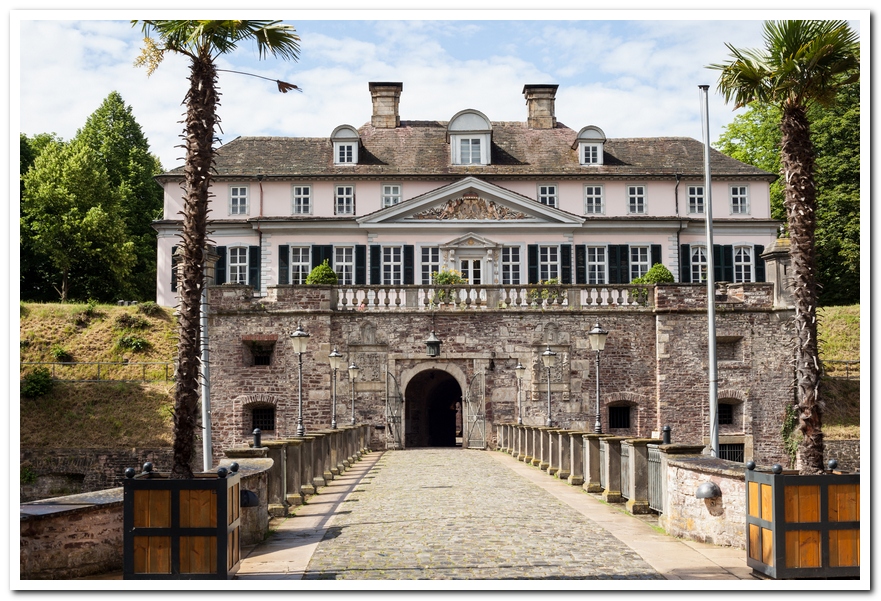
Mostly the sat-nav I have mounted on my bike worked very well in giving us good, traffic-free routes. However, on a couple of occasions, not understanding all the symbols on the German mapping, we followed tracks that perhaps weren't really meant for bikes. Here is an example - we had to walk across fields at this particular point.
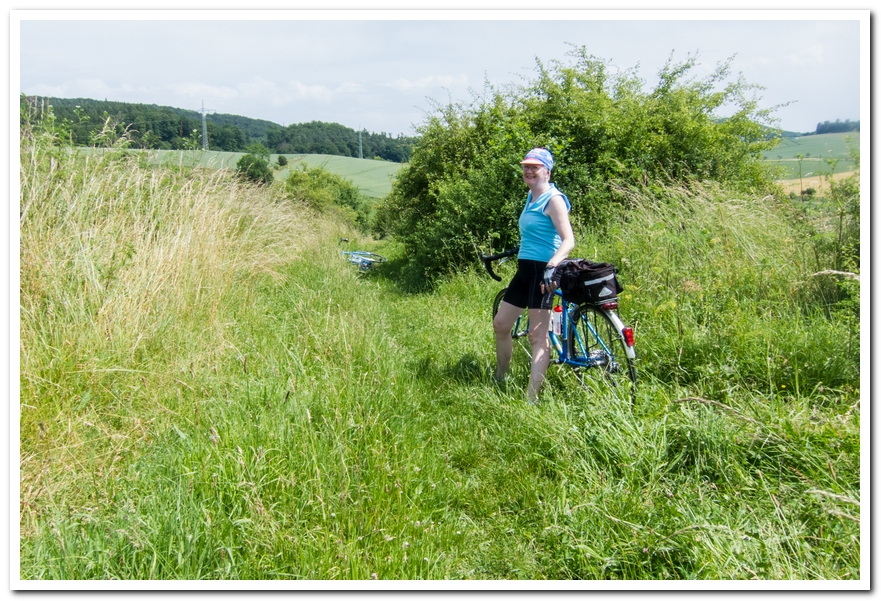
We went into Bodenwerder for an evening meal. This is taken as we sat in the terrace outside the restaurant waiting for the food to arrive.
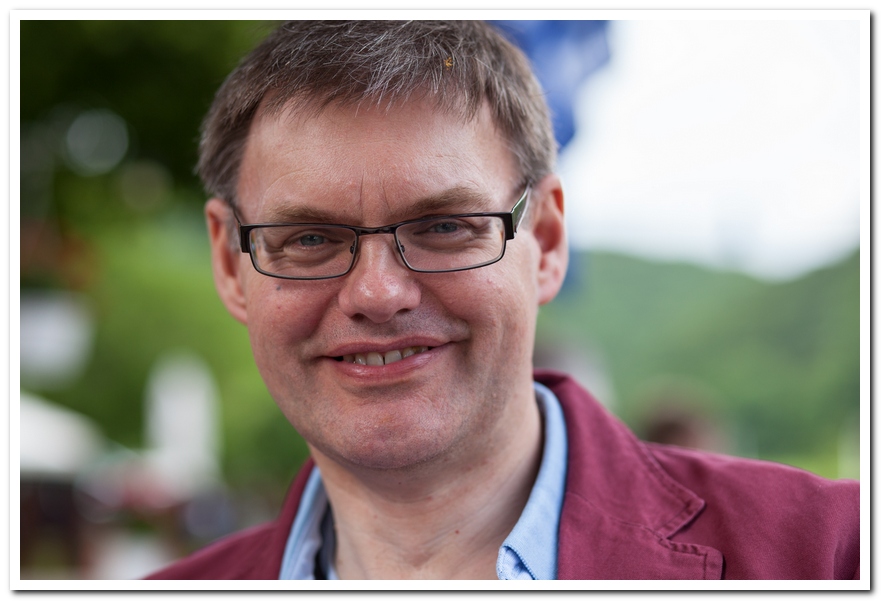
Pat insisted that I put this onto the website. I will leave it to your imagination what she had just told me!
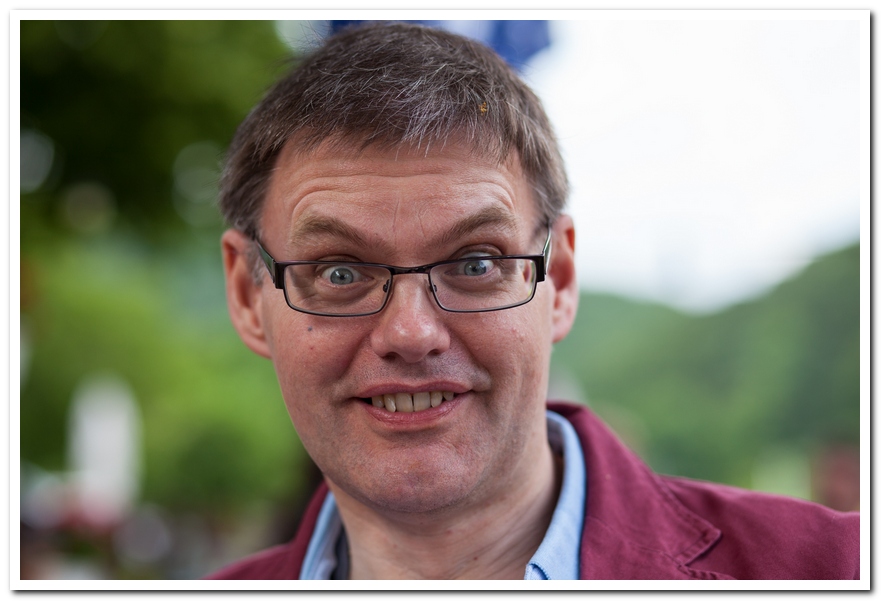
This is Pat outside the Rathaus (Town Hall) in Bodenwerder.
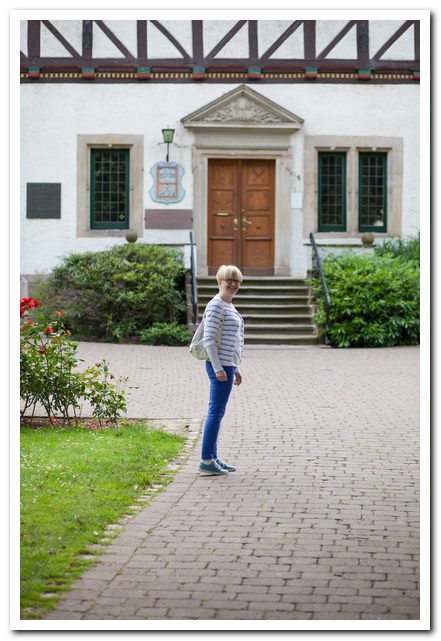
A view of Bodenwerder on the way back to our Ferienwohnung (holiday home).
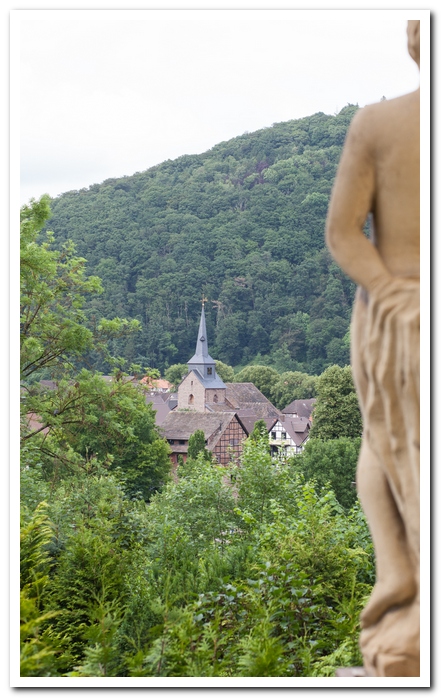
Whilst out on one of our bike rides, we visited die Burgruine Polle (the ruined castle in Polle). The castle is used for the performance of the Aschenputtelspiel (an open-air performance of Cinderella).
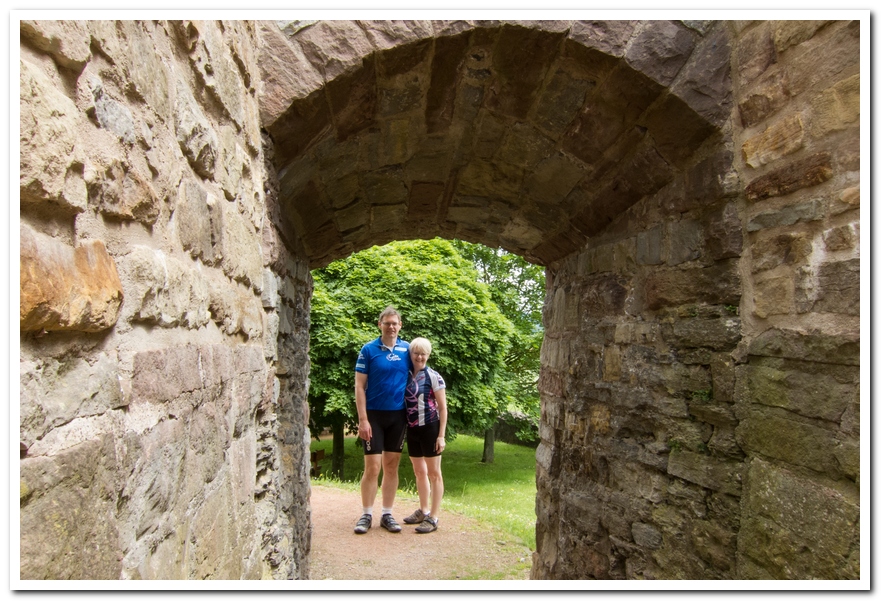
Next are some photographs from the Felgenfest (Bicycle Festival) that took place whilst we were on holiday. 55km of roads between Bodenwerder and Rinteln were closed to traffic other than bicycles. We rode all the way to Rinteln and then back again. This is the guy who opened the proceedings in Bodenwerder. He is dressed as Baron von Muenchhausen who lived in Bodenwerder.
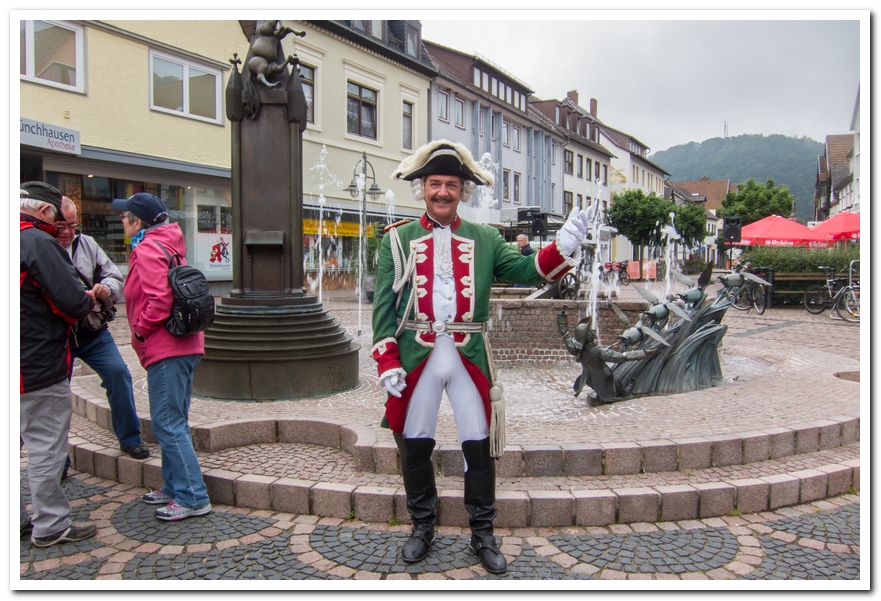
Part of the way round the route, the army had erected a pontoon bridge to enable the cyclist to cross the River Weser. This photo was taken on the way down to the bridge.
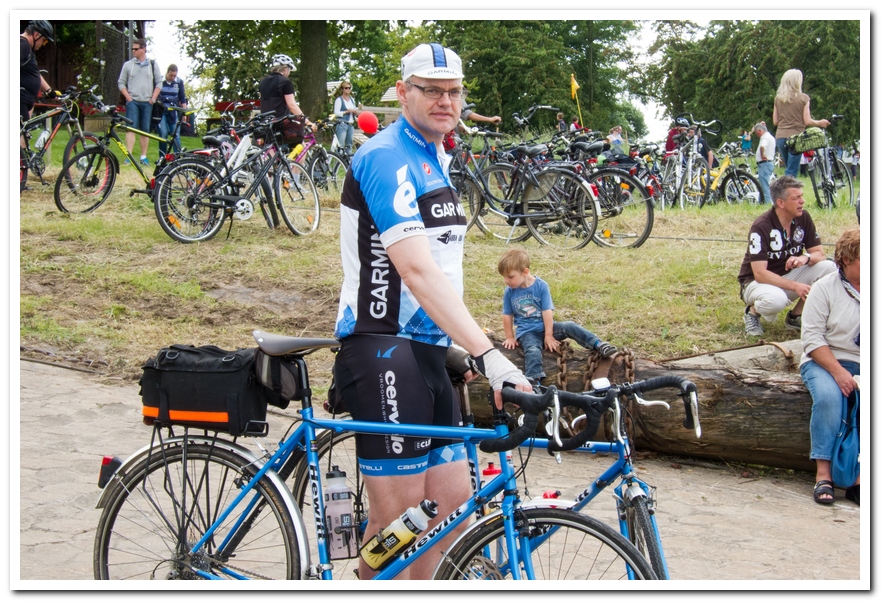
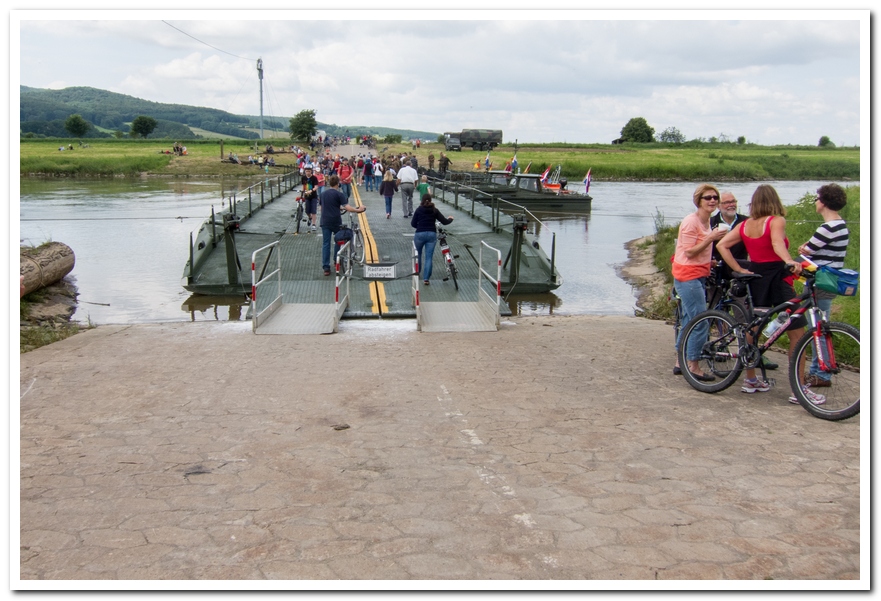
This was the half-way point in Rinteln.
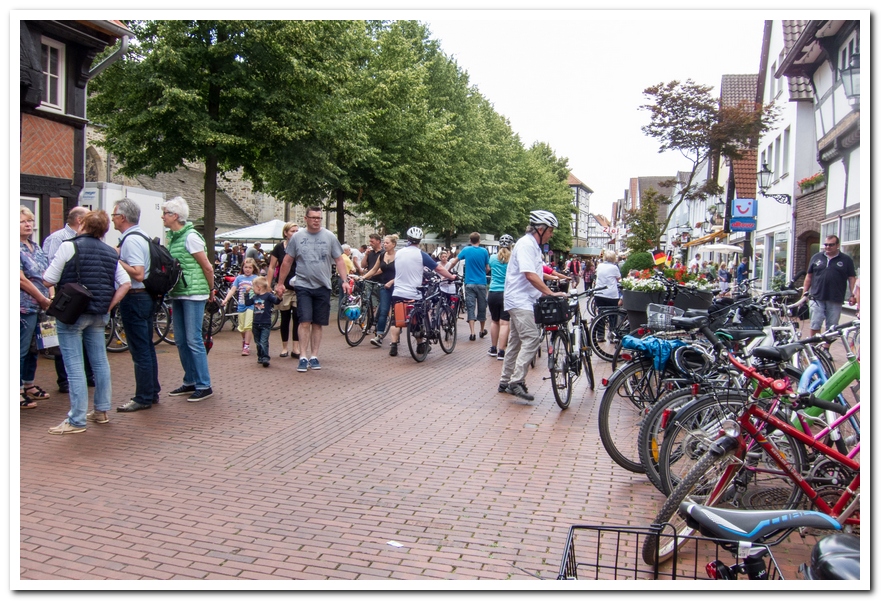
This and the following two photos show some of the buildings in Hildesheim. It is one of the oldest cities in Northern Germany but many of its buildings were destroyed by air raids in 1945. The city had little military significance but was bombed in order to undermine the morale of the German people. A number of the old buildings in the city centre have now ben restored.
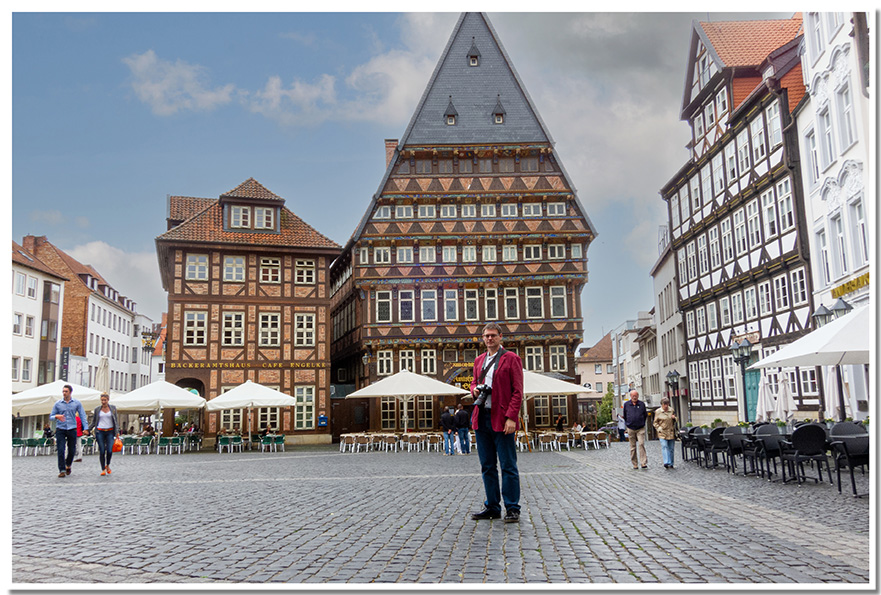
This is the Umgestülpter Zuckerhut which was reconstructed in 2009/2010.
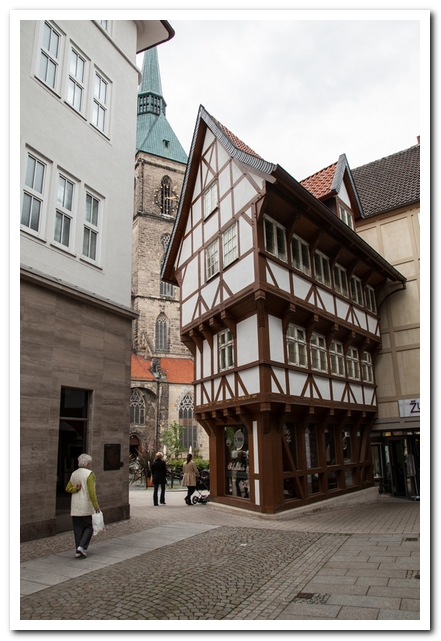
The building on the left of this photo is the Tempelhaus which was restored in 1950. It now houses the tourist information office.
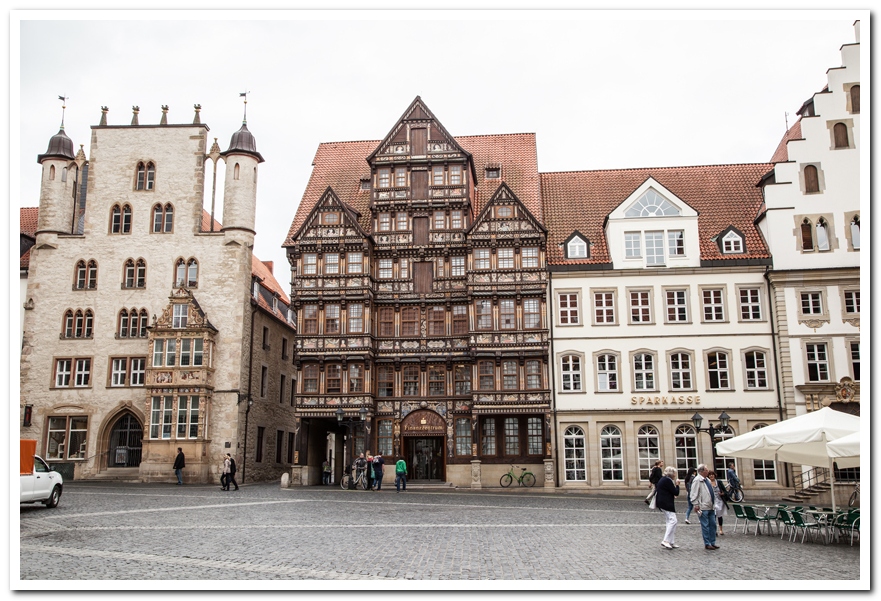
Schloss Bückeburg
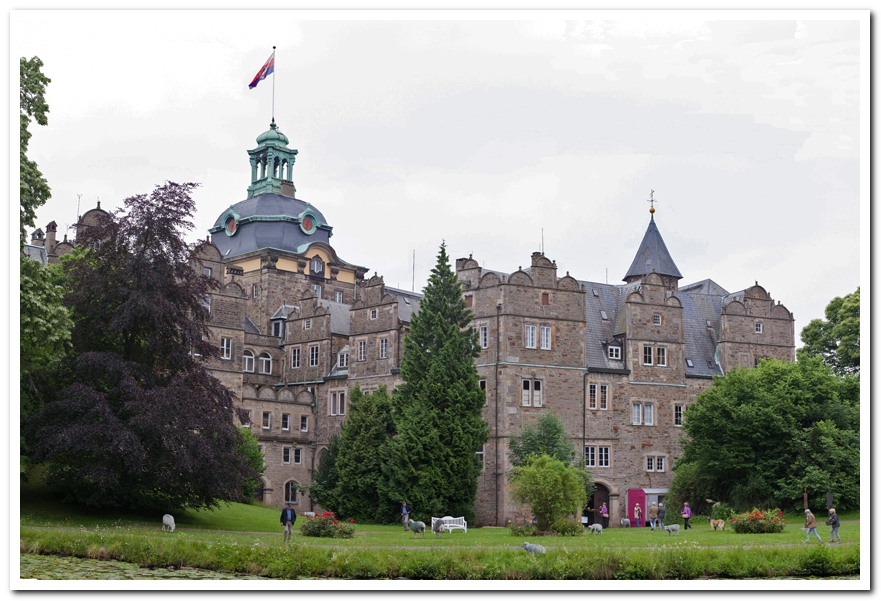
This is St. Marienkirche which stands next to Schloss Hämelschen. It was the first free-standing protestant church to be built after the Reformation.
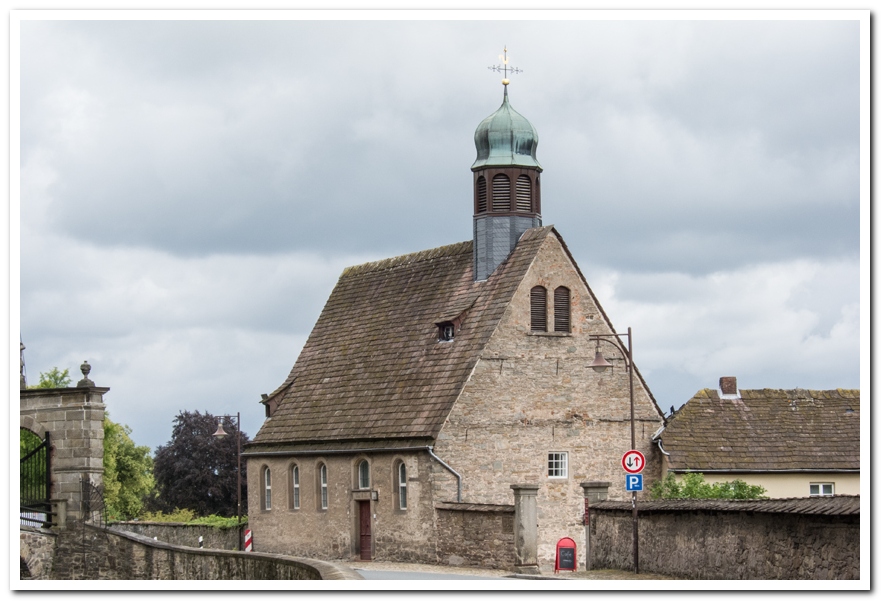
And this is Schloss Hämelschen.
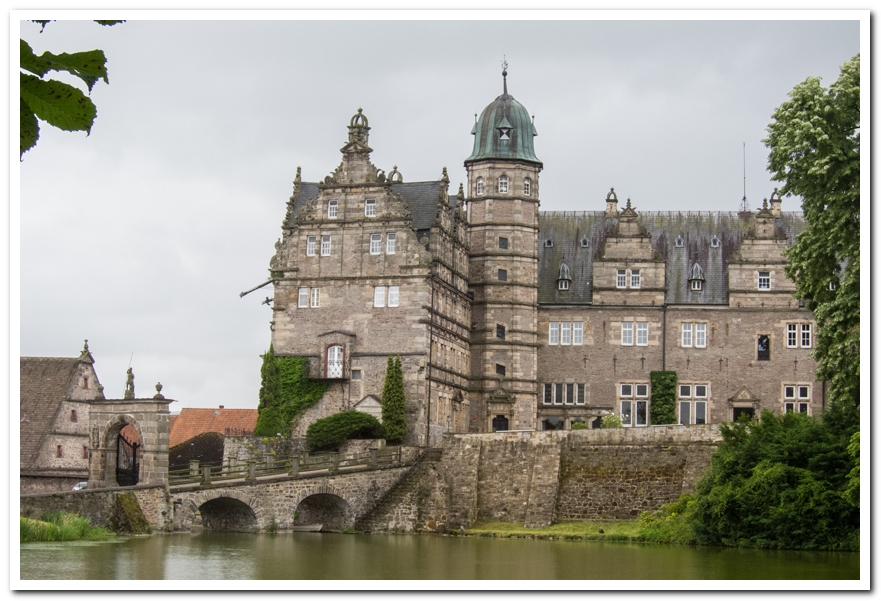
An interesting sculpture that we came across as we cycled along the banks of the River Weser towards Hameln. The sculpture is the Treidler Figuren. Treidlers pulled barges upstream from Bremen to Hann-Münden.
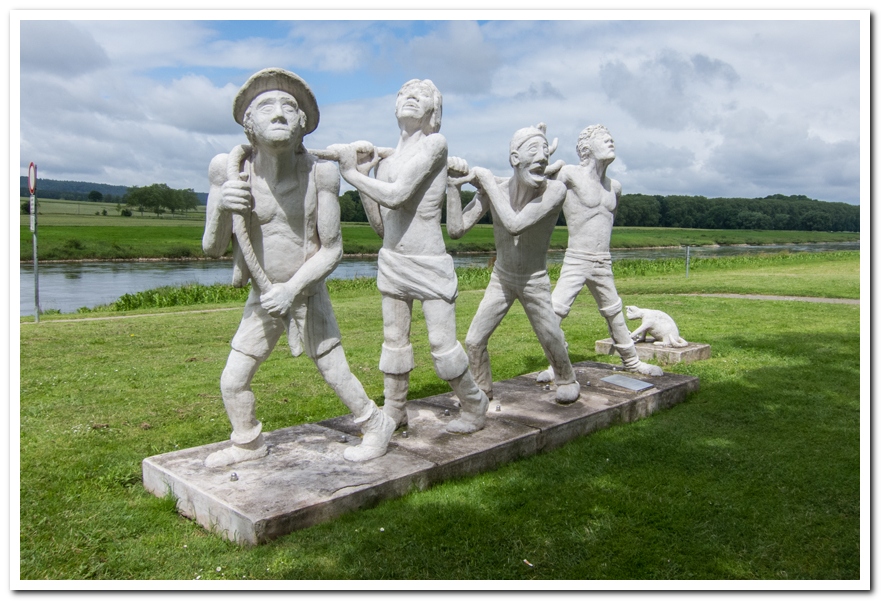
Finally here are some photos of our accommodation in the Ferienwohnung of Familie Buberti at 26 Friedrich-Ebert Strasse, Bodenwerder.
